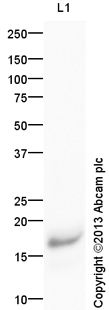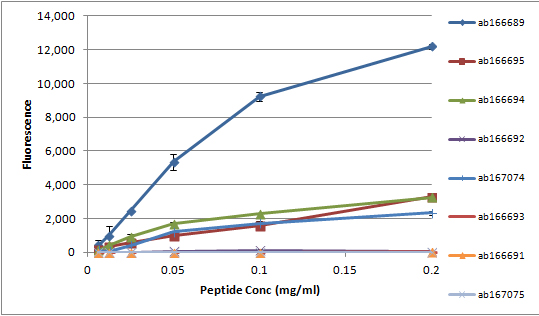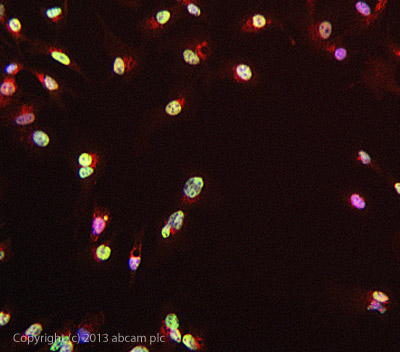
Anti-Histone H2A (symmetric di methyl R29) antibody (ab129208) at 1 µg/ml + Calf Thymus Histone Preparation Nuclear Lysate at 0.25 µgSecondaryGoat Anti-Rabbit IgG H&L (HRP) (ab97051) at 1/10000 dilutiondeveloped using the ECL techniquePerformed under reducing conditions.

All batches of ab129208 are tested in Peptide Array against peptides to different Histone H2A modifications. Six dilutions of each peptide are printed on to the Peptide Array in triplicate and results are averaged before being plotted on to a graph. Results show strong binding to Histone H2A - symmetric di methyl R29 peptide (ab166689), indicating that this antibody specifically recognises the Histone H2A - symmetric di methyl R29 modification.ab166689 - Histone H2A - symmetric di methyl R29ab166695 - Histone H2A - asymmetric di methyl R29ab166694 - Histone H2A - mono methyl R29ab167074 - Histone H2A - unmodified R29ab166692 - Histone H2A - symmetric di methyl R11ab166693 - Histone H2A - asymmetric di methyl R11ab166691 - Histone H2A - mono methyl R11ab167075 - Histone H2A - unmodified R11

ICC/IF image of ab129208 stained HepG2 cells. The cells were 4% formaldehyde fixed (10 min) and then incubated in 1%BSA / 10% normal goat serum / 0.3M glycine in 0.1% PBS-Tween for 1h to permeabilise the cells and block non-specific protein-protein interactions. The cells were then incubated with the antibody ab129208 at 1µg/ml overnight at +4°C. The secondary antibody (green) was DyLight® 488 goat anti- rabbit (ab96899) IgG (H+L) used at a 1/1000 dilution for 1h. Alexa Fluor® 594 WGA was used to label plasma membranes (red) at a 1/200 dilution for 1h. DAPI was used to stain the cell nuclei (blue) at a concentration of 1.43µM.


